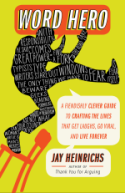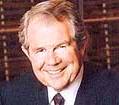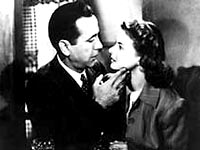Languaging at Its Best
 Monday, August 29, 2005 at 09:09AM
Monday, August 29, 2005 at 09:09AM  Quote: "Verbing weirds language." Calvin, in the comic strip "Calvin and Hobbes"
Quote: "Verbing weirds language." Calvin, in the comic strip "Calvin and Hobbes"
Figure of Speech: anthimeria (an thih MARE ee uh), the verbing figure.
The anthimeria, which means "one part for another" in Greek, takes one part of speech (usually a noun) and transforms it into another (usually a verb). To all but the grammar Nazis, it offers unlimited creative opportunities. Shakespeare anthimeriaed all over the place. "I’ll unhair thy head." "The thunder would not peace at my bidding." "He ploughed her, and she cropped."
Snappy Answer: "Weirding language makes it funner."
Got a snappier answer? Email Figaro.






